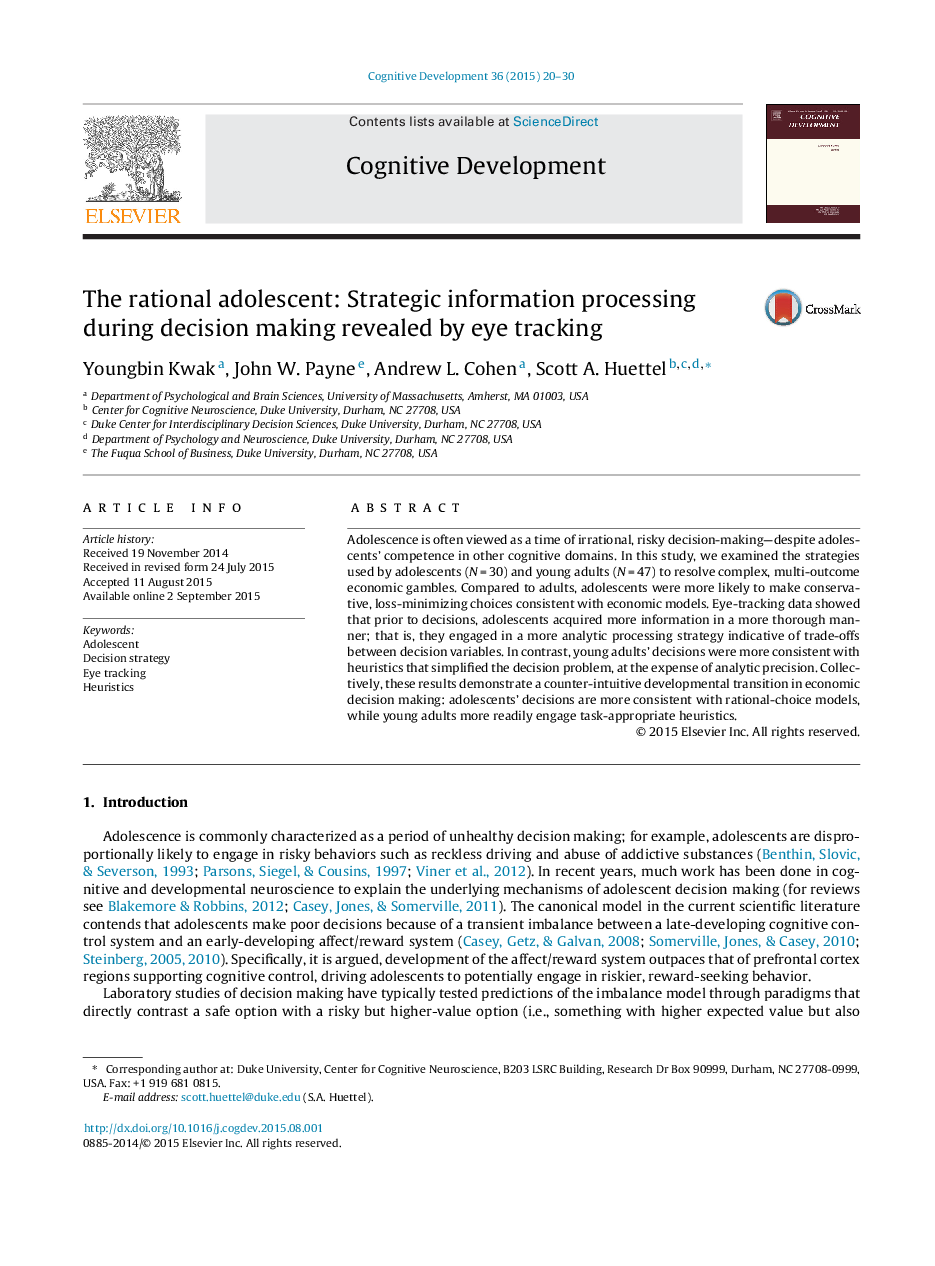| Article ID | Journal | Published Year | Pages | File Type |
|---|---|---|---|---|
| 916485 | Cognitive Development | 2015 | 11 Pages |
•Adolescence is often viewed as a period of irrational and risky decision making.•With eye tracking, adolescents’ information processing during gambling was studied.•Adolescents made choices that are more conservative, risk-averse compared to adults.•Adolescents engaged in a more analytic information processing strategy.•Adolescents’ transition into adulthood reflects increased use of decision heuristics.
Adolescence is often viewed as a time of irrational, risky decision-making—despite adolescents’ competence in other cognitive domains. In this study, we examined the strategies used by adolescents (N = 30) and young adults (N = 47) to resolve complex, multi-outcome economic gambles. Compared to adults, adolescents were more likely to make conservative, loss-minimizing choices consistent with economic models. Eye-tracking data showed that prior to decisions, adolescents acquired more information in a more thorough manner; that is, they engaged in a more analytic processing strategy indicative of trade-offs between decision variables. In contrast, young adults’ decisions were more consistent with heuristics that simplified the decision problem, at the expense of analytic precision. Collectively, these results demonstrate a counter-intuitive developmental transition in economic decision making: adolescents’ decisions are more consistent with rational-choice models, while young adults more readily engage task-appropriate heuristics.
